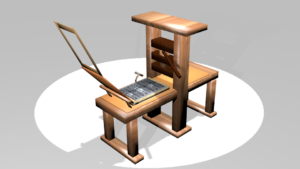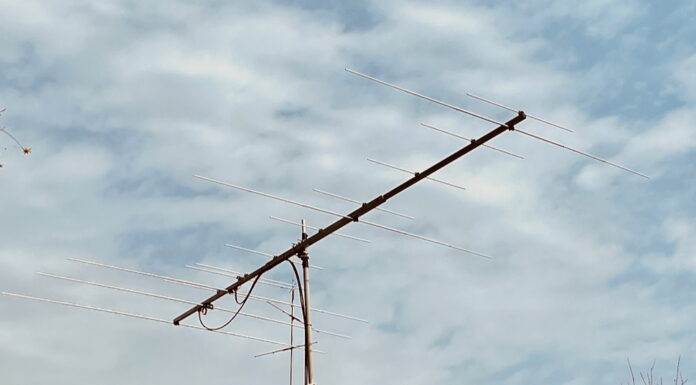Print is so last century — but it is in your mailbox
 The obituary for print has been written many times. I’m sure Guttenberg read a few of them in his time, no doubt written by monks with a quill and parchment. But, of course, it’s not dead as witnessed by all the catalogs in your mailbox, particularly this time of year.
The obituary for print has been written many times. I’m sure Guttenberg read a few of them in his time, no doubt written by monks with a quill and parchment. But, of course, it’s not dead as witnessed by all the catalogs in your mailbox, particularly this time of year.
It is dead, or nearly so, for small niche publications and topics such as amateur radio. The ARRL’s QST Magazine may be an exception given the high volume of advertising that supports its publication as well as a steady base of members to serve as subscribers.
Even so, they’ve been wise to branch out into online digital versions and invest in their website’s front page news as well as their social media channels.
Print’s advantage, of course, is that it is in your hands and not so easy to discard and forget as you move to the next Facebook post. It’s actually a key medium for nonprofit fundraising. I’ve written about this at Typical Response Rates for Direct Marketing Efforts where telephone is tops followed closely by direct mail. Email, websites, and social media are way behind in their performance, at least for fundraising.
Website content — it’s static but the go-to resource for information
Websites are fantastic options for communicating a wide range of information about your organization, your topics of interest, or selling products. The Amazon website is probably the best example with a wide range of products for sale and, even if you don’t buy from them, it’s a superb source of information on what’s available.
Amateur radio has manufacturers, retailers, associations, and the blogosphere. This blog is an example. I’ve not only documented my own ham radio adventures but those blog posts serve as information points for others who are following their own adventures. As just one example, my top blog post so far for 2017 is FSK Interface with 1,500+ views. I wrote it in 2013. It headed the list last year as well.
Social media — it’s where we are around the clock
 I’ve written on digital news for a few clients. We’re not only watching social media for posts from friends and relatives, we’re finding our news there. The Pew Research Center reports that 43% of U.S. adults found their news online in 2017. This is up from 38% last year. Not only that but 67% get at least some of their news on social media. Plus, 85% report they use their mobile device to read news.
I’ve written on digital news for a few clients. We’re not only watching social media for posts from friends and relatives, we’re finding our news there. The Pew Research Center reports that 43% of U.S. adults found their news online in 2017. This is up from 38% last year. Not only that but 67% get at least some of their news on social media. Plus, 85% report they use their mobile device to read news.
Of course, most amateur radio manufacturers, retailers, and associations also use social media. But at this point it’s generally following the topics from their print and online publishing activities rather than fostering discussion and participation. But it is growing in importance.
Podcasts — if you’re not following one or more, you’re missing out
There are a growing number of online podcasts that focus on amateur radio including Ham Radio Now, Ham Nation, Amateur Radio Newsline, W5KUB, Solder and Smoke, Linux in the Ham Shack, QSO Today, Ham Radio 360, Ham Talk Live, and the list goes on.
These podcasters offer regular news and features of interest to amateur radio operators. As just one example, I’ve been fascinated by Bill Stearns’ work for Linux in the Ham Shack with a video series on how to get your station set up on Linux. This is very impressive work as well as enormously helpful to those interested in Linux for ham radio.
Social Media — Facebook, and chat groups
 Hopefully you’ve connected with one or more Facebook groups that are focused on amateur radio. Or, you’ve been able to connect with some Yahoo or Google groups. They can be genuinely helpful sources of information and assistance as you reach out to others to provide insight into a topic of interest or a problem you’re trying to solve.
Hopefully you’ve connected with one or more Facebook groups that are focused on amateur radio. Or, you’ve been able to connect with some Yahoo or Google groups. They can be genuinely helpful sources of information and assistance as you reach out to others to provide insight into a topic of interest or a problem you’re trying to solve.
Unfortunately, they can also provide ready sources of entertainment for trolls looking to stir the waters or those seeking an audience for their rants on related or unrelated topics. Even so, with proper moderation, these chat groups can be enormously helpful. They are particularly helpful as an organizer who needs to communicate information to a group and generate feedback. I use them with K2BSA and Radio Scouting.
Twitter — a bird of a different color
 With Twitter, which I’ve been using since 2008 trying all the while to find its value, I feel strongly that I’ve found a very useful channel of communicating amateur radio information that has some built-in advantages over the chat groups.
With Twitter, which I’ve been using since 2008 trying all the while to find its value, I feel strongly that I’ve found a very useful channel of communicating amateur radio information that has some built-in advantages over the chat groups.
My personal example is using my @k5nd channel to follow satellite amateur radio topics. I’ve found that Twitter has a great deal of communication on this topic from knowledgeable and active satellite operators. Plus, it happens in real-time about upcoming and even active satellite passes.
I speculate that one reason Twitter works so well for this topic is because the people engaged in satellites and Twitter are much younger than the general amateur radio population. They know how to use the medium.
Another aspect I’ve noticed is that you have the option of choosing every single one of those you follow on Twitter. For example, if someone is posting political stuff, drop them. You, in essence, have the ability of moderating and selecting your own Twitter chat group. Add those whose input you appreciate, drop those you don’t appreciate.
In addition, when the post length is limited to 140 characters, and now 280 characters, it’s pretty hard to generate any lengthy rant. With that character limit, it may even require thinking to post something that might prove of interest to others.
Of course, it could also be that I’ve stumbled upon a perfect match between topic, audience, and communication channel. Even so, it is working extremely well.
Amateur Radio Information Sources
That’s not the typical discussion of amateur radio communication. Instead, it’s about the various ways of communicating about amateur radio topics. But I hope it provides some nudges to your own thinking about amateur radio information sources and even opens up some new channels for your own use. Try some of them out on your ham radio adventure.








